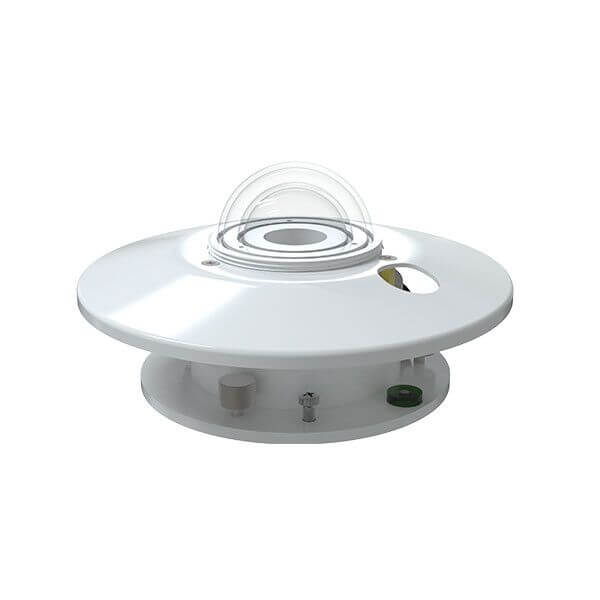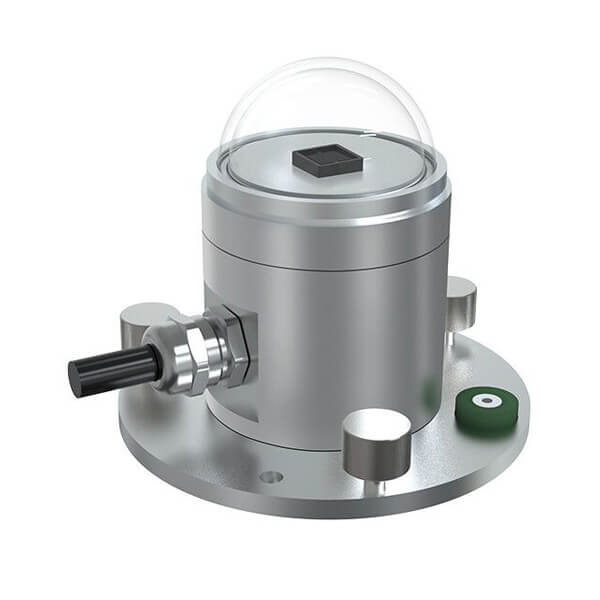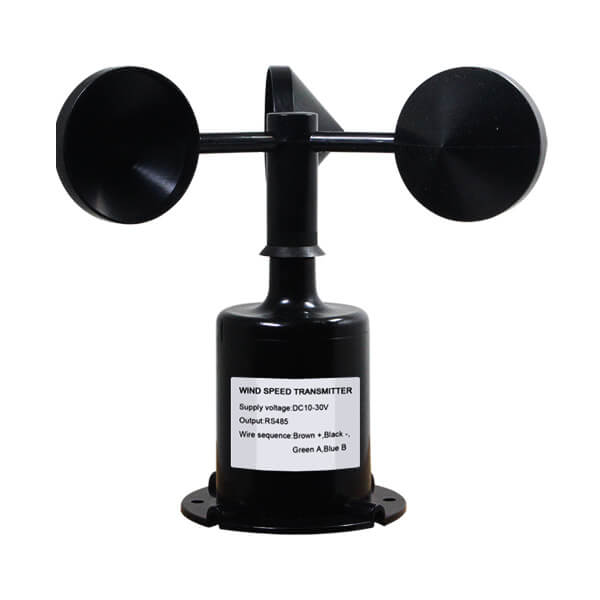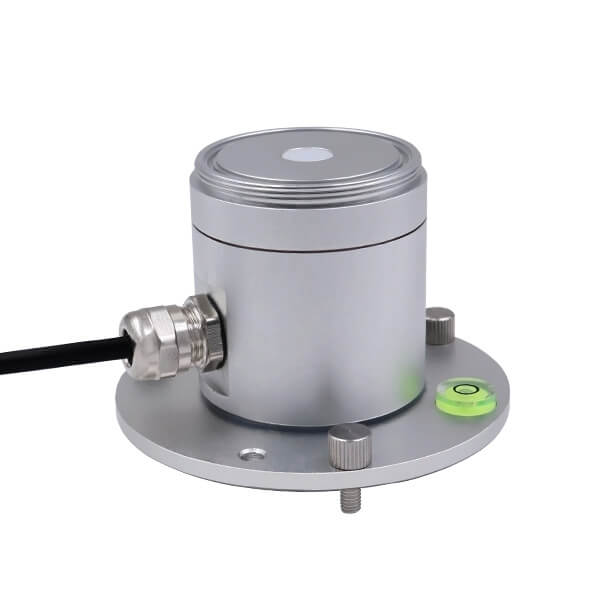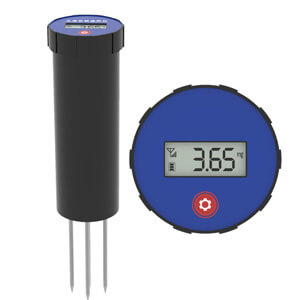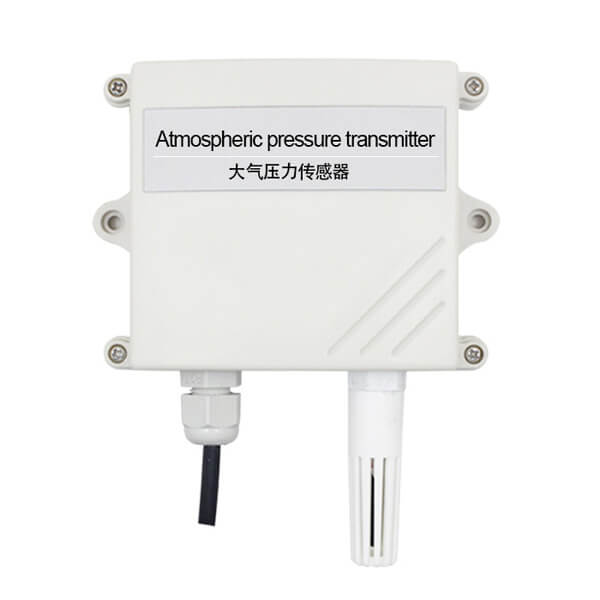Table of Contents What is photosynthetically active radiation? The spectral component of solar radiation that is effective for plant photosynthesis
Pyranometer sensor
It uses the thermoelectric principle and can measure solar radiation with a spectral range of 0.3~3μm. A desiccant-filled drying cartridge prevents dew from forming on the inner sides of the domes. A bubble level and adjusting leveling screws enable the sensor to be leveled without using a leveling base. High accuracy and can be sent for inspection. The solar pyranometer price is affordable.
- Model: RS-TBQ-*-AL-EX
- MOQ: 1 PCS
- Delivery date: within 24 hours
- Price: $146.8
About - Pyranometer
What is a pyranometer? Pyranometer is a type of sensor that measures the solar irradiance or the power of sunlight in watts per square meter (W/m²). They are widely used in meteorology, climatology, solar energy studies, and agriculture to monitor and study the available solar radiation.

Pyranometer sensor datasheets
Power supply range: 10V~30V DC
Spectral range: 0.3~3μm
Measuring range: 0-2000W/m²
Resolution: 1W/m²
Accuracy: ±3%
Working environment: -40℃~60℃, 0~95%RH (non-condensing)
Sensitivity: 7~14 μV·W-1·m2
Internal resistance: about 300Ω
Response time (99%): ≤30s
Non-linear error: ≤±3%
Corresponding error of directionality: ≤±30W/m²
Temperature response error: ≤±8% (-40℃~+40℃)
Yearly stability: ≤±3%
Spectral selectivity: ≤±10%
Cosine response error: ≤±5%
Tilt response error: ≤±2%
Output mode: RS485, 0-5V, 0-10V, 4-20ma
The accuracy of this solar radiation sensor is very high and it supports inspection. This pyranometer can be widely used in solar energy utilization, weather station, agriculture, building material aging and air pollution and other departments to measure solar radiation energy. We also have a cheap solar radiation sensor for you to choose from.
Features - Pyranometer Sensor
Working principle
The pyranometer sensor working principle: the sensing element is a wire-wound electroplating thermopile, and the sensing surface is a black layer with high absorptivity. Utilize the thermal effect of radiation, absorb solar radiation to produce temperature difference, and output the measured value. It also has a temperature compensation function, which can accurately measure solar radiation.

The upper part of the sensing surface adopts a transparent double-layer glass cover with a light transmittance of 95%, which can not only reduce the influence of air convection on the equipment but also block the radiation of the cover itself. And add a radiation shield to measure scattered radiation.
Pyranometer installation
1. Make sure to install the bracket, and the radiation sensor is parallel to the ground (leveling can be done through the leveling knob)
2. Use screws to pass through the mounting holes on the sensor to fix the sensor on the mounting bracket
3. After installation, remove the protective cover
4. Please pay attention not to damage the glass cover during the installation process, so as not to affect the measurement accuracy
5. The installation location should be an open place all around and without any obstructions.
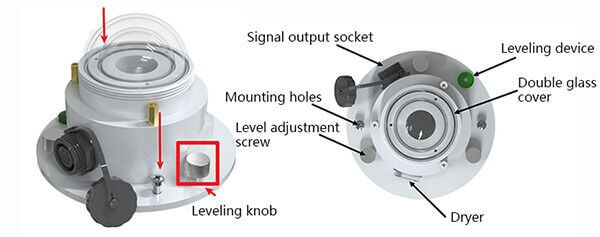
Solar Pyranometer Sensor Maintenance
1. The glass cover should be kept smooth and clean, often wipe it with a soft cloth or fur
2. There must be no water in the glass cover. If it encounters heavy rain, snow, ice, and other long-term weather, it is recommended to cover it
3. It is recommended to check whether the desiccant in the dryer has become damp at regular intervals. The specific manifestation is that the orange turns into a dark color. If this happens, replace the desiccant in time, or remove the desiccant to dry and put it back into use
4. The equipment has been used for more than two years, and the sensitivity must be re-calibrated by the manufacturer or measurement department
Related Sensor Blogs
Table of Contents What are meteorological sensors? Meteorological sensors are specialized equipment for understanding and measuring climate change. These sensors
The main purpose of environmental monitoring is to provide data on environmental quality and changing trends to ensure the safety
The weather sensors are the sensing end of the weather station and collect various weather-related data. The weather station can
A greenhouse is a closed environment that provides optimal conditions for plant growth and promotes plant growth by controlling indoor
Table of Contents What is IoT? IoT is the “Internet of things“. It is an extended and expanded network based
What is smart farming? Smart farming is the application of Internet of Things technology to traditional agriculture, using sensors and
The weather station can provide users with comprehensive weather information over the years. Regular maintenance of weather stations is an
A complete set of a weather station is composed of two parts: hardware and software. The hardware part includes various
Table of Contents Do you know where to mount weather station? The weather station should be installed as far as
Table of Contents A sensor is a device that can sense the measured information and transform it into an electrical
It is widely known that ultraviolet (UV) radiation is prevalent in the natural environment, primarily originating from solar. While most

